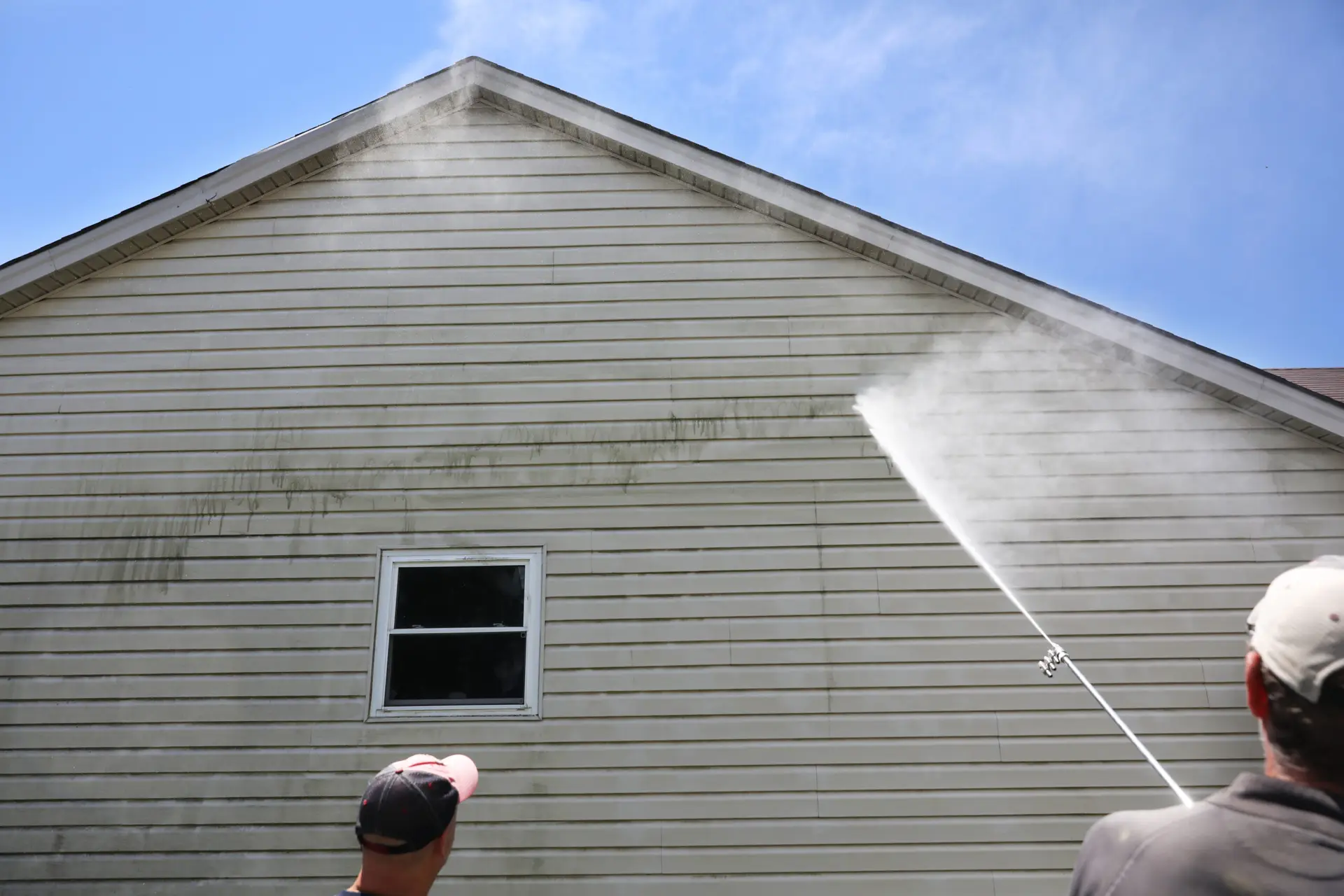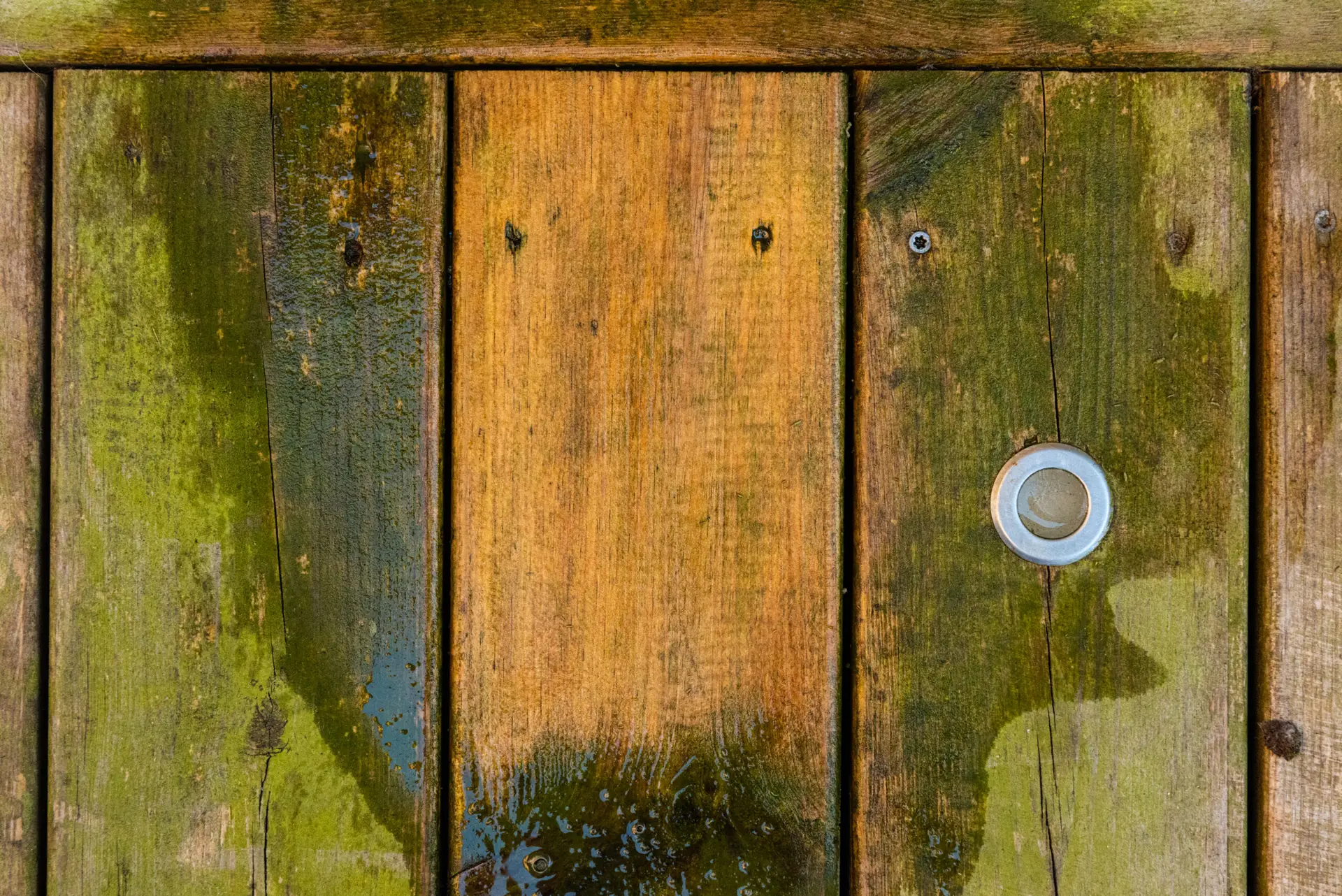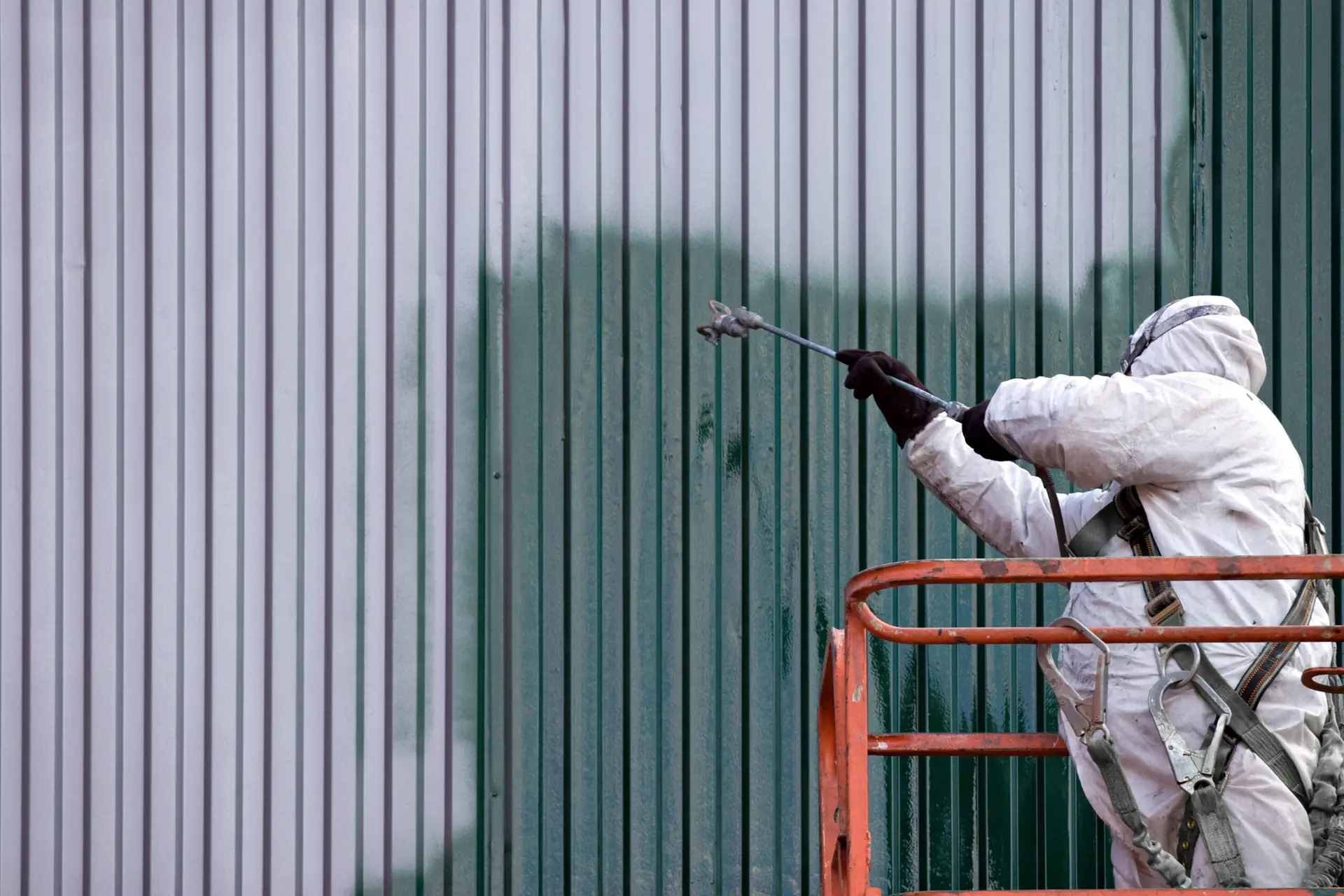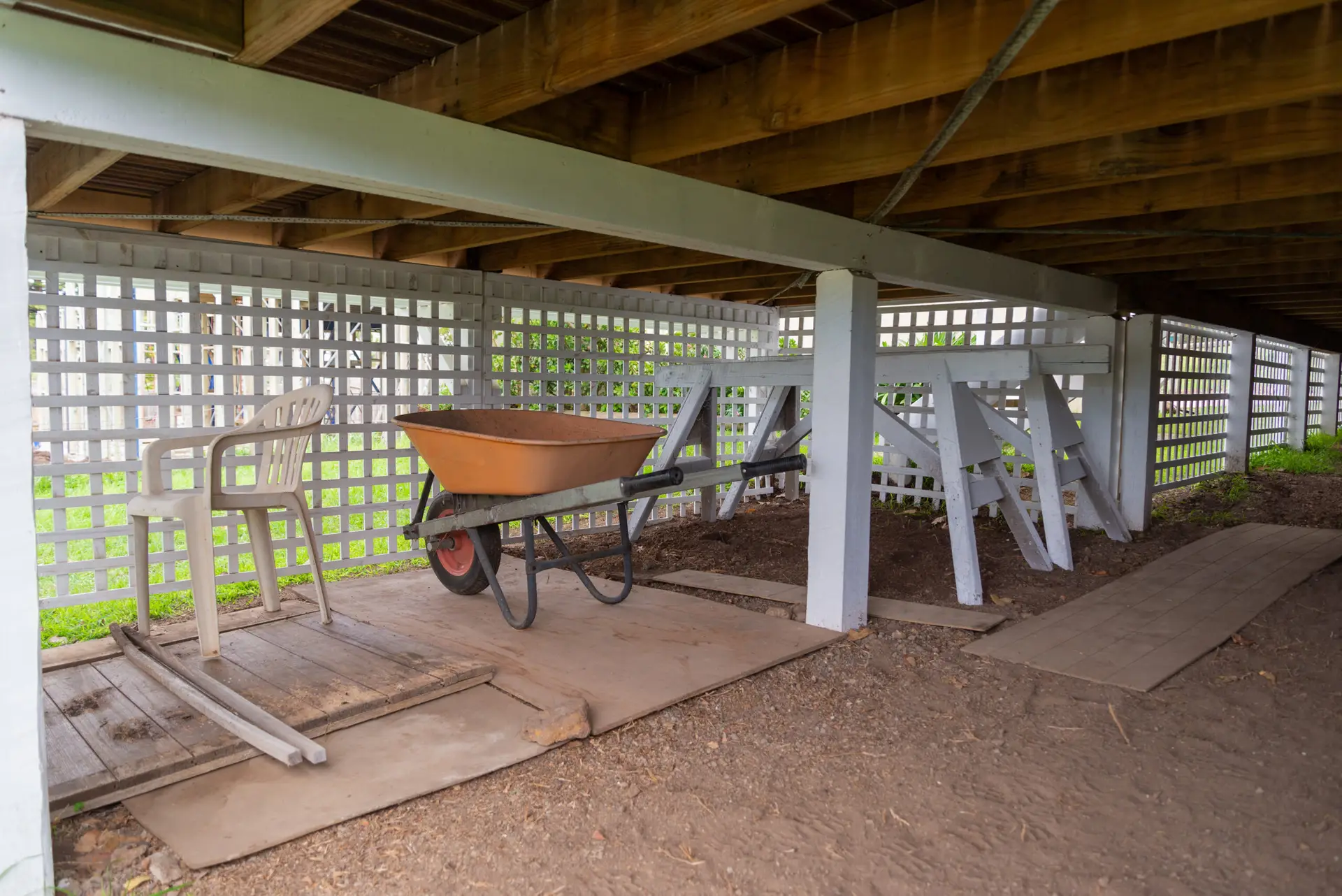As you may have heard, before painting, a surface must be clean, dry and dull. As you can see in this picture we have a lot of all three of those problems, the first one of them is clean. In order to clean this wall, you must use a strong mildew, algae and mold chemical. Usually you can use TSP (Tri-Sodium-Phosphate) but in this case old-fashioned bleach can be used. You can apply it with a sponge and then hand- or power-wash it off. The problem with this wall in particular is that the wall is so fragile that power washing may damage the wall. It is important to treat each surface for each project differently to ensure a long-lasting paint system.







